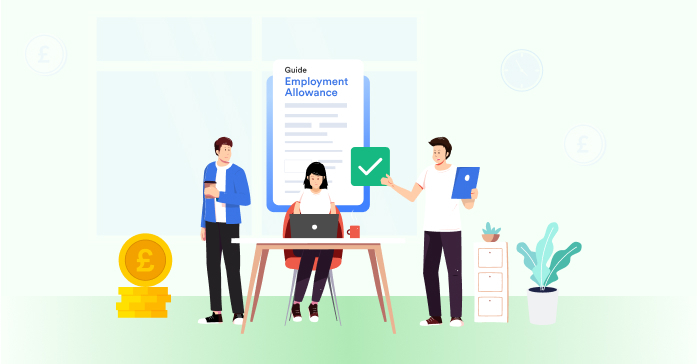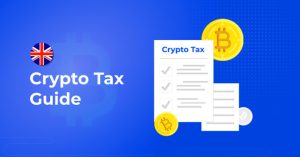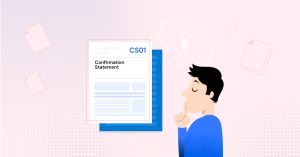The Employment Allowance is a government incentive that allows eligible employers to reduce their National Insurance contributions (NICs) by up to £10,500 annually. This relief applies only to the employer's portion of NICs and does not affect employee contributions. If you're a small business or employer, understanding and utilising the Employment Allowance can help you manage payroll costs more effectively.
This guide will explain the Employment Allowance eligibility requirements, when to claim, and key considerations for small businesses.
What is Employment Allowance?
Employment Allowance is a financial relief designed to support employers by reducing the amount they pay in employer National Insurance. Each year, eligible employers can claim up to £10,500, which is applied automatically as a reduction to their NICs during payroll processing until the full amount is utilised or the tax year ends.
For example, if your business owes £8,000 in employer NICs during a tax year, that full amount can be covered under the Employment Allowance, saving you a significant expense.
Why is Employment Allowance Important for Employers?
For small businesses, every penny counts. Employment Allowance lowers your NIC liabilities, freeing up resources that can be reinvested into growing your business or easing financial pressures. It's particularly beneficial for payroll sustainability, especially for organisations with modest turnover or growing staffing needs.
Who is Eligible for Employment Allowance?
To qualify for the Employment Allowance, you need to fulfil the following Employment Allowance criteria:
Type of Organisation
- You must operate as a business or charity (including community amateur sports clubs).
- Public sector organisations are eligible only if less than 50% of their work is in public services (e.g., contracts for NHS or local councils).
National Insurance Threshold
- You should either have at least one employee (or at least 2 directors if you don’t have any employees) earning above the secondary NICs threshold (£5,000 for 2025/26).
- From April 2025, employers with Class 1 liabilities exceeding £100,000 will also qualify—a change from previous years’ restrictions.
Exclusions
- Companies with only one director as the sole employee cannot claim the allowance.
- You cannot include domestic employees such as nannies, unless they’re carers or support workers.
- Connected companies or charities (part of the same corporate group) can only claim once.
Special Cases
If your business involves manufacture or sale subject to state aid rules, you'll also need to check your de minimis allowance limits, as this state aid counts toward your total.
If you're unsure about NI employment allowance eligibility, our team at Debitam can help you assess your situation and ensure you're not missing out.
When Should You Claim Employment Allowance?
Claims for Employment Allowance can be submitted at any point during the tax year, but it's advisable to apply as soon as possible to maximise the benefit. The earlier you claim, the sooner you'll see a reduction in your NIC payments.
If you've missed claiming in previous years, you can still apply retroactively—HMRC permits claims for up to four tax years prior.
Is It Worth Claiming Employment Allowance?
Absolutely. For eligible businesses, the Employment Allowance can result in significant savings, particularly if you're managing a small team. The money saved on NICs could be used to hire additional employees, invest in new equipment, or cover other business expenses.
Take a look at the following example:
- Monthly NIC liability = £875
- Annual NIC liability = £10,500
- Employment Allowance = £10,500
With Employment Allowance, your NICs liability is completely eliminated for the year—saving you thousands of pounds that can be reinvested into your business.
Can a Company With Only Two Directors Claim Employment Allowance?
This depends on how the directors are structured within your company. The Employment Allowance cannot be claimed if:
- Your company has only one director, and they are the sole employee earning above the secondary threshold.
- Both directors are your only employees, but neither earns above £5,000 per year (the NIC secondary threshold).
However, if you have two directors and at least one earns above the threshold, you should be eligible. Keep in mind specific criteria, as compliance with employment thresholds is crucial.
If you find the criteria unclear, or if your company’s structure changes, consulting with experts can save time and ensure compliance.
Key Considerations and Next Steps
If you're eligible for Employment Allowance, it can be a game-changer for managing payroll taxes, especially as NIC rates rise in 2025. Ensure you:
- Verify your employer allowance eligibility annually.
- Apply promptly each year to maximise benefits.
- Keep detailed records for any retroactive claims, ensuring compliance with HMRC guidelines.
Still unsure if your company qualifies or need help navigating the process? Our specialists at Debitam are ready to assist. From confirming eligibility to guiding your claims process, we make taxes simple.
Get in touch today—don’t leave money on the table.













